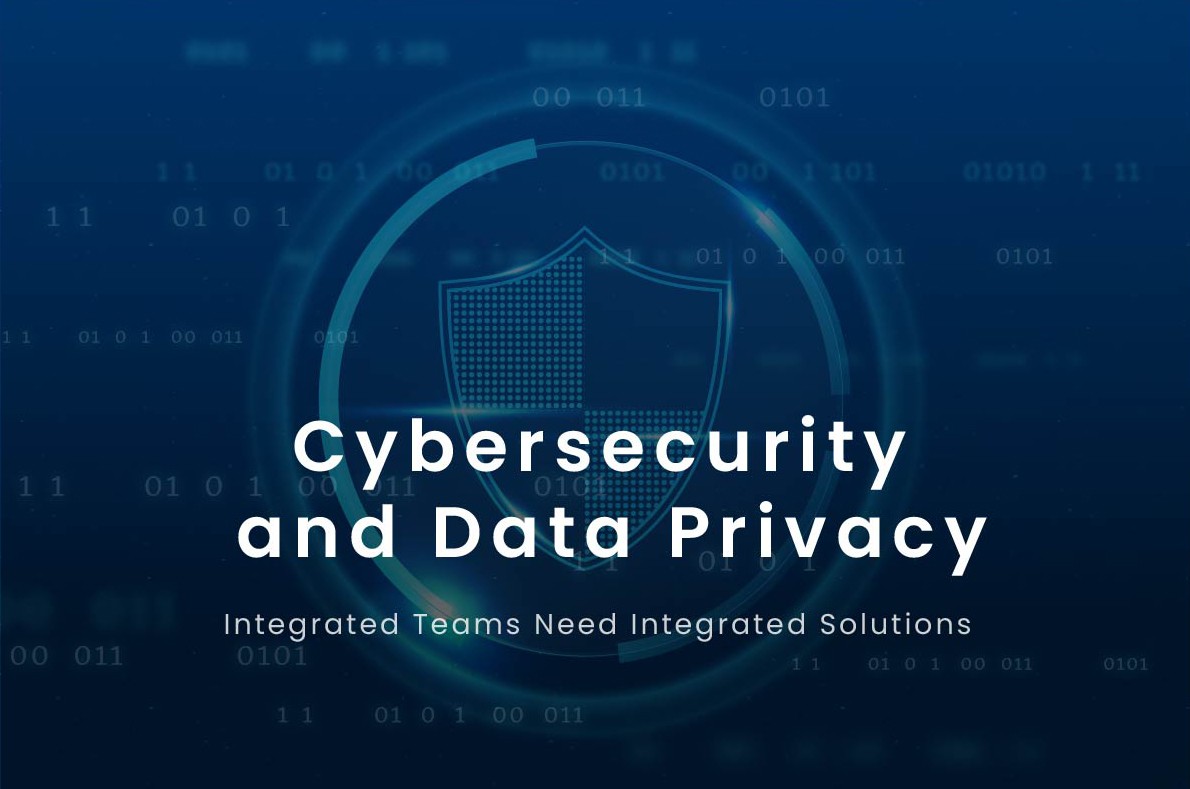_ _ Infobelt
Cybersecurity and Data Privacy: Integrated Teams Need Integrated Solutions
Each year, countries pass new data privacy laws, each with their own regulations and requirements. For companies that do business in America, the picture is even more stark. Four states already have data privacy laws on the books, with an additional 15 states with bills in active consideration, and 14 that have proposed at least one in the past. In total, that’s 33 different laws… in just one country. While the rules in these laws vary, what remains the same is the need for strong cybersecurity efforts to ensure that user data is protected.
The increasing demands in these areas can leave companies feeling like they’re slowly getting buried and unable to dig themselves out. Other companies may be able to keep up with new developments, but expend an exorbitant amount of resources to make it happen. Either way, large and enterprise firms need a better say to keep their systems secure and compliant without breaking the bank or running their team ragged.
Integrating Cybersecurity and Data Privacy Functions
One of the most significant developments in recent years in cybersecurity and data privacy is the growing realization that these two areas hold more in common than many may think at first glance. Cybersecurity often works from the outside in—preventing breaches using protocols that manage external access to a system. However, how a company organizes, secures, and encrypts data at rest can have a massive impact on the effectiveness of breach prevention and mitigation.
Data security, on the other hand, works from the inside out. You may have a ton of data, with different rights requirements. Some employees should be able to access all of it. Others only need access to some of it, and there are likely some who shouldn’t see any of it. Complicating the matter are the variety of third parties that need access to your data: Analytics firms, payroll vendors, and integrated technology partners. Data must be kept fluid and usable, but sensitive data should be masked or encrypted to prevent such unauthorized access from within. Again, determining the manner in which your company organizes, secures, and encrypts data is a significant part of this team’s operations.
So, even though the day-to-day operations of these two areas may feel like they’re separate, they share many of the same underlying core tasks. In some companies, different teams run these operations, while in others, it may be different people on the same team—or possibly a fully integrated security team. But no matter how a business approaches cybersecurity and data privacy, how it sets data governance policies affects both efforts.
The Human Element
Unfortunately, correctly structuring your cybersecurity and data privacy operations isn’t enough to overcome all problems. There’s one weak link that threatens to bring down operations every day, and it’s one that often goes under the radar or gets misconstrued as a major strength: The human element.
Humans are a major cause of vulnerabilities. We tend to use weak passwords, even though we know better. We fall for phishing attacks and give our credentials away for free. Or, we fail to secure data, leaving it open for others (employees, consultants, vendors, or even hackers) to access.
But worse than mistakes that come from laziness or ignorance are those that we make by design, believing them to be good. As Forbes points out, we often make policy decisions that compound our difficulties instead of relieving them. When we add tools that provide new features for our workers, better security, or other benefits, we’re also adding maintenance, proactive security actions, and overall monitoring to our agenda.
Better Protection with Automated Solutions
The key to overcoming human tendencies to undermine security is through the use of controlled workflows. By ensuring that people work through each of the required steps for security and compliance, companies can limit the mistakes their employees make.
While companies’ strategic decisions matter when it comes to security and data privacy, a huge portion of the success or failure of these programs comes down to the consistency of execution. Companies first learned this lesson when it came to patching: More than 60 percent of data breaches have been traced to missing operating systems or application patches. This fact help spurs the move to the cloud, or to automated systems to ensure that the right steps are done every time, often without requiring worker input. The same is now true of data privacy and compliance workflows: Automating them saves time, but also ensures that critical actions don’t fall through the cracks.
Whether streamlining regulatory compliance, books and records management, or database optimization, automation can help reduce the amount of time that your employees are spending on non-critical tasks and lower your long-term costs. Automated processes can also prompt employees to take actions that only they can complete, ensuring that regulatory and security actions are completed on time.
How Infobelt Helps
If you find yourself using a ton of different platforms to manage your data security, then adding one more isn’t always the right move. But, if that one platform replaces everything else you’re using, taking away the headache of integration and paying for service agreements across a wide range of tools, the savings in time and money can be massive.
At Infobelt, we’ve worked hard to create tools that help enterprises take control of compliance and data privacy while still ensuring the visibility needed to run a modern tech stack. Building the right data management strategy, managing access, ensuring a smooth compliance workflow, and developing a storage strategy can be huge challenges, but Infobelt makes it easy. And since new threats and new laws never stop, we don’t either.
Schedule a demo today to get matched with the right tools for compliance with financial, healthcare, or energy data privacy laws and simplify your data compliance processes.

